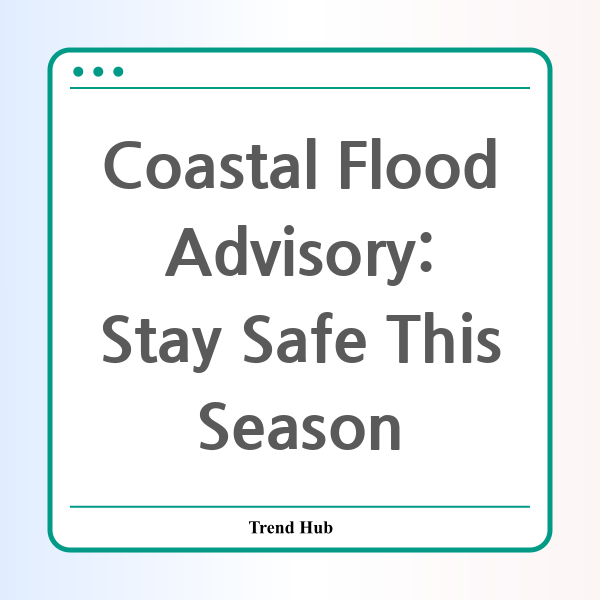* This website participates in the Amazon Affiliate Program and earns from qualifying purchases.

As the coastal regions brace for the potential impacts of flooding, residents of Coastal Pender and Coastal New Hanover have been placed under a coastal flood advisory until Monday night. Understanding the dangers associated with coastal flooding is crucial for ensuring safety during adverse weather. This advisory highlights the importance of preparation and awareness in mitigating risks associated with flooding.
At 1:38 p.m. on Monday, the National Weather Service (NWS) issued a coastal flood advisory indicating that inundation up to one foot may occur in low-lying areas nearby shorelines and tidal waterways between the hours of 6 p.m. and 11 p.m. This warning serves as a reminder that flooding can not only damage properties but also pose significant risks to personal safety.
Residents are advised to be vigilant, particularly in low-lying roads and areas along the Intracoastal Waterway and adjacent tidal creeks. Here are a few essential safety tips to consider:
- Evacuate When Necessary: If you live in a flood-prone area or are camping in a low-lying region, it is vital to seek higher ground immediately. Follow any evacuation orders from local officials.
- Secure Your Property: Before evacuating, ensure your home is locked up properly. If time allows, disconnect utilities and appliances to prevent further damage.
- Avoid Hazardous Areas: Stay clear of basements and rooms that may have submerged electrical outlets. Listen for any unusual sounds such as buzzing or crackling, which could indicate electrical dangers.
- Water Safety: Do not enter floodwaters or areas that may carry electrical currents. Even six inches of moving water can knock an adult off their feet, making it crucial to exercise extreme caution.
- Know How to Drive Safely: If you must travel, be prepared for road closures and always avoid driving through any flooded areas. Just 12 inches of swiftly flowing water can carry most vehicles away.
Driving safety during rain is just as critical. Here are some driving tips to help navigate wet conditions:
- Use Headlights: Turning on your headlights enhances visibility, even in daylight, and alerts other drivers to your presence.
- Stay in Middle Lanes: Rainwater often accumulates on road edges. Driving in the middle can help you maintain better traction.
- Avoid Puddles: Hitting puddles can lead to hydroplaning, where vehicles lose traction. It's safest to steer clear of any standing water.
- Maintain Distance: Keeping a safe distance from larger vehicles prevents visibility issues caused by spray created in their wake.
- U-Turn When Necessary: If you encounter flooded roads, make a U-turn and find a safer route.
Understanding hydroplaning and how to respond can save lives. Hydroplaning occurs when a vehicle slides uncontrollably across a wet surface. This typically happens due to:
- Increased Vehicle Speed: Higher speeds reduce tire traction.
- Water Depth: Even shallow water can cause hydroplaning.
- Tire Condition: Ensure your tires have adequate tread to maintain grip on wet surfaces.
In case you do experience hydroplaning, remember these steps:
- Ease off the accelerator.
- Turn into the skid to regain control.
- Wait for the tires to reconnect with the road, then gently straighten the steering wheel.
- Use brakes gently if needed.
As you navigate through this coastal flood advisory, staying informed and proactive can significantly enhance safety. Monitoring weather updates, understanding how to drive in wet conditions, and knowing what to do in emergencies is your best defense against flooding risks. Stay safe, and take all necessary precautions to protect yourself and your property!
* This website participates in the Amazon Affiliate Program and earns from qualifying purchases.